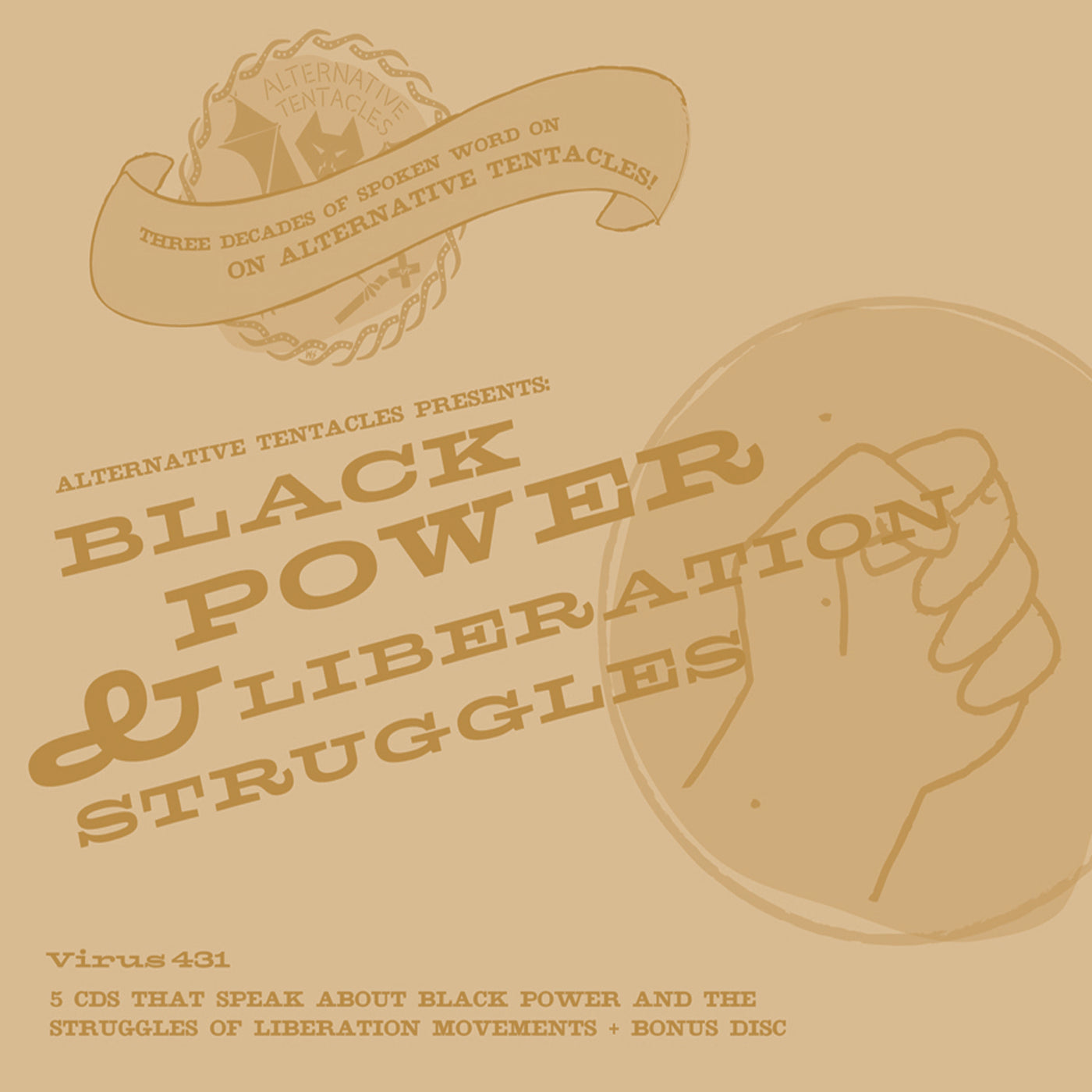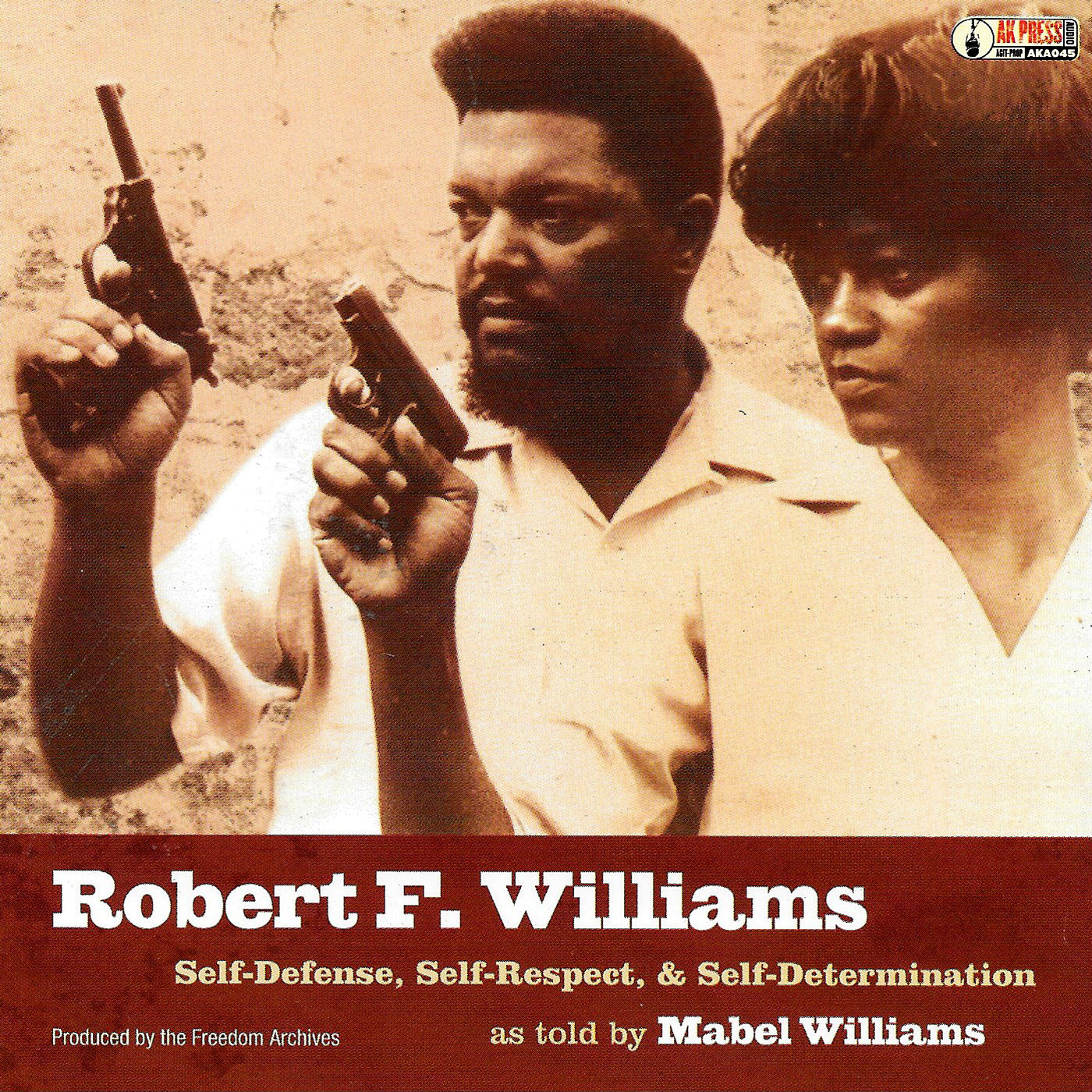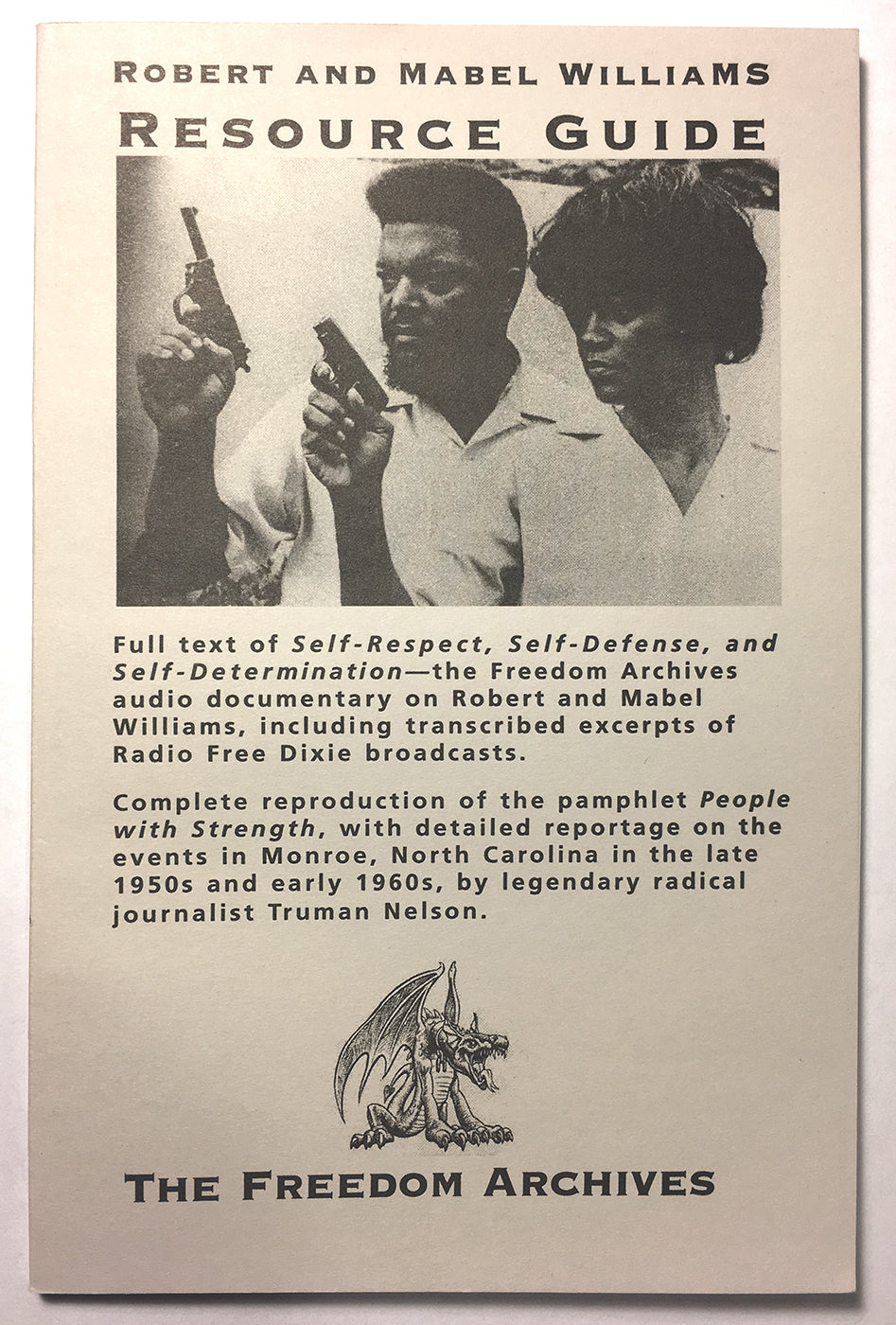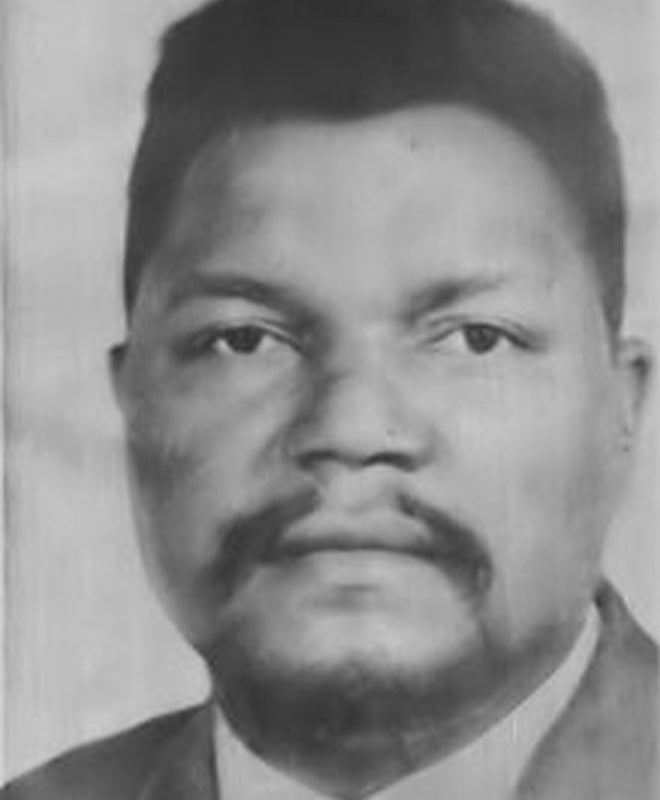Bio
Robert F. William (1925-1996) was one of the most influential black activists of the generation that toppled Jim Crow and forever altered the arc of American history.
He was born in Monroe, North Carolina. After having worked as an autoworker in Detroit and having fought in the 1943 riots there, he returned to his native town in 1955. Back in Monroe – the regional headquarters of the Ku Klux Klan – Williams became active for the National Association for the Advancement of Coloured People (NAACP), and radicalised his views steadily after having fought several cases of racism. One of these cases involved two young black boys, a seven-year-old and a nine-year-old, who were found guilty of rape and sentenced to indefinite terms in reform school after having kissed a white girl. The case gained a lot of attention in Europe and led to huge demonstrations in Paris, Rome, and Vienna. In Rotterdam the U.S. Embassy was stoned. Embarrassed by these protests the US government decided to release the boys.
Several other cases of legal racism convinced Williams that Afro-Americans could not get justice under the then system, and that armed self-defense was a necessity for black people. His organisation of armed squads of black people to fight off attacks by the KKK and his militant views had a large impact in black communities all over the country, especially as they proved effective. ‘The Afro-American is a “militant” because he defends himself. His family, his home, and his dignity. He does not introduce violence into a racist social system – the violence is already there, and has always been there. It is precisely this unchallenged violence that allows a racist social system to perpetrate itself’, Williams writes in his book Negroes With Guns (1962). Williams challenged not only white supremacists but also Martin Luther King Jr. and the civil rights establishment. He and his wife Mabel published the radical civil rights paper “The Crusader.”
He was falsely accused of kidnapping charges by the FBI and was forced to flee during the 1960s to Cuba–where he broadcast “Radio Free Dixie,” a program of black politics and music that could be heard as far away as Los Angeles and New York City–and then China, Williams remained a controversial figure for the rest of his life. He built strong relationships with world leaders like Fidel Castro, Che Guevara and Mao Tse Tung, and organized international support for the human rights struggles of African-Americans.
Historians have customarily portrayed the civil rights movement as a nonviolent call on America’s conscience–and the subsequent rise of Black Power as a violent repudiation of the civil rights dream. But Robert F. Williams reveals that both movements grew out of the same soil, confronted the same predicaments, and reflected the same quest for African American freedom. As Robert Williams’s story demonstrates, independent black political action, black cultural pride, and armed self-reliance operated in the South in tension and in tandem with legal efforts and nonviolent protest.
From Politics in the Zeros (links to source material here)
“Williams was a counterpoint to the non-violent philosophy practiced by Martin Luther King. However he viewed it as self-defense. When the Klan is shooting at you, he said, you are justified in shooting back.
An essay by Dr. Michael S. Brown, proud NRA member, as was Williams, says:
‘The year was 1957. Monroe, North Carolina, was a rigidly segregated town where all levels of white society and government were dedicated to preserving the racial status quo. Blacks who dared to speak out were subject to brutal, sadistic violence.
It was common practice for convoys of Ku Klux Klan members to drive through black neighborhoods shooting in all directions. A black physician who owned a nice brick house on a main road was a frequent target of racist anger. In the summer of 1957, a Klan motorcade sent to attack the house was met by a disciplined volley of rifle fire from a group of black veterans and NRA members led by civil rights activist Robert F. Williams.
Using military-surplus rifles from behind sandbag fortifications, the small band of freedom fighters drove off the larger force of Klansmen with no casualties reported on either side. It appears that the organized armed blacks of Monroe never shot any of their tormentors. The simple existence of guns in the hands of men who were willing to use them prevented greater violence.’
From the University of Florida website about their documentary on Williams:
‘Robert Williams, often dubbed the “violent crusader,” intended his philosophy of armed self-defense to work in tandem with non-violent resistance. Instead, that philosophy became the catalyst for a national showdown between two opposing philosophies of the civil rights movement.
In August 1961, Freedom Riders came to Monroe, North Carolina to prove that passive resistance rather than armed self-defense would defeat the local Klan and improve race relations. But on August 27th all hell broke loose. By the end of the day, Freedom Riders had been bloodied, beaten, and jailed and Rob Williams was on the run from the FBI.'”
[Mabel Williams, Freedom Archives]
From the Worker’s World in 1995:
“ROBERT WILLIAMS 1925-1995, by Stephen Millies
‘In thirty minutes you’ll be hanging in the courthouse square.’ So spoke A. A. Mauney, the Monroe, N.C., police chief, to Robert F. Williams on Aug. 27, 1961. Williams–the president of the local NAACP chapter–wasn’t lynched that day. He was hounded into exile by the FBI.
Robert F. Williams died Oct. 15 in Grand Rapids, Mich., at age 71. His story is a remarkable chapter in the history of Black liberation. Monroe, N.C.–Williams’ birthplace– was in 1925 like hundreds of other Southern communities. Black people lived under lynch law. “Whites Only” signs littered the town, including its library and swimming pool.
The local white aristocracy–including the Helms family–ran the town. Old Man Helms was sheriff of Union County, whose seat is Monroe. His son Jesse became the Ku Klux Klan senator from North Carolina. Helms and the other local racist ruling families kept Monroe “safe” for Duke Power and the tobacco companies that really ran North Carolina. And for the Southern Railroad–now the Norfolk Southern–controlled by the J.P. Morgan banking house in New York. Keeping Monroe “safe” meant keeping Black people down and keeping unions out. North Carolina still ranks lowest among the states in the percentage of unionized workers.
ARMED SELF-DEFENSE
In 1955 the NAACP chapter in Monroe had dwindled down to six members. Williams, who had worked as a machinist in New Jersey and did a hitch in the Marines, took over its leadership. He started a membership drive among workers and the unemployed. On too many Saturday nights, KKKers would drive through the Black community, shooting it up. Many of these Klansmen came from South Carolina, whose border was only 14 miles away. When North Carolina Gov. Luther Hodges did nothing to stop the attacks, Williams and the local NAACP chapter formed a National Rifle Association chapter and trained its members in using firearms.
In the summer of 1957 a Klan motorcade attacked the home of NAACP member Dr. Albert E. Perry. An armed defense squad drove them off. Klan night riding came to a sudden stop in Monroe. This famous incident–which electrified so many Black people–was completely suppressed in the big-business media. Only Black publications such as Jet Magazine, the Afro-American and the Norfolk Journal and Guide reported the event. In October 1958, two Black boys aged 7 and 9 were arrested for rape in Monroe after a 7-year-old white girl kissed one of them on the cheek. These two children–who could have been given the death penalty–were sentenced to 14 years in the reformatory. Only after Williams fought on and protests occurred throughout Europe did the state release the two.
`THE CRUSADER’
The national NAACP suspended Williams for six months, but the Monroe NAACP chapter became famous for its militancy and for advocating self-defense against racist attacks. To spread his views, Williams started a newspaper called the Crusader. North Carolina authorities were determined to get rid of Williams. They offered him bribes. When that didn’t work, they tried to kill him. On June 23, 1961, Bynum Griffin, the owner of a local car dealership, tried to run Williams off the road.
On Aug. 27, 1961, a full-scale assault was launched upon Monroe’s Black community. The racists assaulted and jailed “Freedom Riders” — demonstrators who had come from the North to overturn segregation. During this assault the Stegalls, a white couple known for their Klan sympathies, drove through the Black community. Only Williams’ personal intervention prevented any violence against them. Yet this action then became the basis of a phony kidnapping charge that was used to hound Williams out of the country. This charge was also used to jail one of Williams’ closest supporters, Mae Mallory.
Williams escaped the FBI dragnet and went to Cuba, where with the assistance of the Cuban revolutionary government he started the anti-racist “Radio Free Dixie.” Later, Williams would live in China, where he urged Mao Zedong to issue his famous message of support to African Americans…
Huey P. Newton–the founder of the Black Panther Party–wrote how Williams’ book “Negroes With Guns” influenced him. Malcolm X had this to say: ‘Robert Williams was just a couple years ahead of his time.'”
Releases
 v431 - Various Artists - "Black Power And Liberation Struggles"
v431 - Various Artists - "Black Power And Liberation Struggles"v431 - Various Artists - "Black Power And Liberation Struggles"
Regular price $14.00 USDRegular priceUnit price / per$14.00 USDSale price $14.00 USD v332 - Robert F. Williams - "Self-Defense, Self-Respect & Self-Determination"
v332 - Robert F. Williams - "Self-Defense, Self-Respect & Self-Determination"v332 - Robert F. Williams - "Self-Defense, Self-Respect & Self-Determination"
Regular price $9.00 USDRegular priceUnit price / per$9.00 USDSale price $9.00 USDSold Out 8.25Robert And Mabel Williams Resource Guide
8.25Robert And Mabel Williams Resource Guide8.25Robert And Mabel Williams Resource Guide
Regular price $5.00 USDRegular priceUnit price / per





